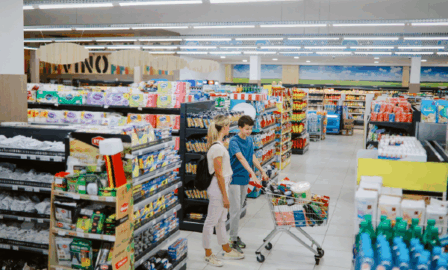Edge Computing in Retail: Improving the Customer Experience
In recent years, edge computing has gained renewed attention in the retail industry. This technology offers solutions to problems like data privacy and enables flexible and localized customer experiences.
Edge computing is a distributed model where data storage and processing happens close to where data is generated and used. Unlike traditional cloud or on-premises computing, edge computing brings the power of data analytics right to the source, whether at the warehouse, in the store, or even on a smart shelf.
Key benefits of edge computing in retail include:
- Faster data processing and decision-making
- Enhanced data security and privacy
- Reduced reliance on internet connectivity
- Lower long-term costs for data transmission and storage
Retailers are taking these benefits of edge computing and applying them to help improve customer experiences throughout their journey and are already seeing benefits in stores. We explore some key use cases of edge computing in retail stores below.
Edge Computing in Retail Stores
Stores are increasingly valuable in the omnichannel retail world, and retailers face challenges with many channels of fulfillment, increases in organized retail crime, and higher customer expectations. Using edge computing, retailers can improve data processing, increase security, and improve the customer experience.
Sam’s Club, for example, piloted its “Seamless Exit” technology in 10 of its stores, using computer vision and machine learning to analyze video feeds in real-time. This eliminated the need for a store associate to check customers’ receipts as they left the building. By processing this data locally using edge computing, Sam’s Club improved customer experience by reducing wait times at the exits while creating 10-18% in annual savings on computing costs.
Similarly, Walmart deployed a smart shelf monitoring system across 70 of its Canadian stores to monitor shelf stock levels using computer vision and machine learning. This edge computing solution helps prevent stockouts and ensures smoother shopping. Beyond that, employees don’t have to monitor shelves continuously and this avoids a poor customer experience of not finding the right product on the shelf.
Amazon is also taking a stab at edge computing, piloting these solutions at its Amazon Fresh and Go stores through their Dash Carts and with their “Just Walk Out” technology. The Dash Carts use an array of sensors and cameras powered by edge computing to create a mobile checkout system on wheels. “Just Walk Out” has been used successfully in several formats and allows customers to grab products off the shelf and leave the store without stopping at the checkout station.
How to Get Started
As you consider implementing edge computing in your retail operations, keep these points in mind:
- Start with Strategy: Identify specific use cases where edge computing can solve real business problems or create new opportunities
- Secure Executive Buy-In: Ensure top leadership understands the potential benefits and challenges of edge computing in retail
- Foster Cross-Functional Collaboration: Successful implementations require input from various departments, including IT, operations, and customer experience teams
- Decide on Build vs. Buy: Determine whether to develop edge solutions in-house or partner with third-party providers based on your organization’s capabilities and resources
Edge computing is positioned to play a crucial role in the future of retail to enable better customer experiences and more efficient operations. By processing the data closer to its source, retailers can make faster decisions, enhance privacy, and create innovative new services.
While edge computing is a technical change, customers can see meaningful improvements with this new technology. Edge allows retailers to use new tools within stores to perform operations faster, reduce waits, and introduce AI without needing high-speed connections.
If executed correctly, edge computing in retail can have significant, positive results for your business. For further guidance, Clarkston’s team of retail technology experts is here to help your organization meet your goals.



